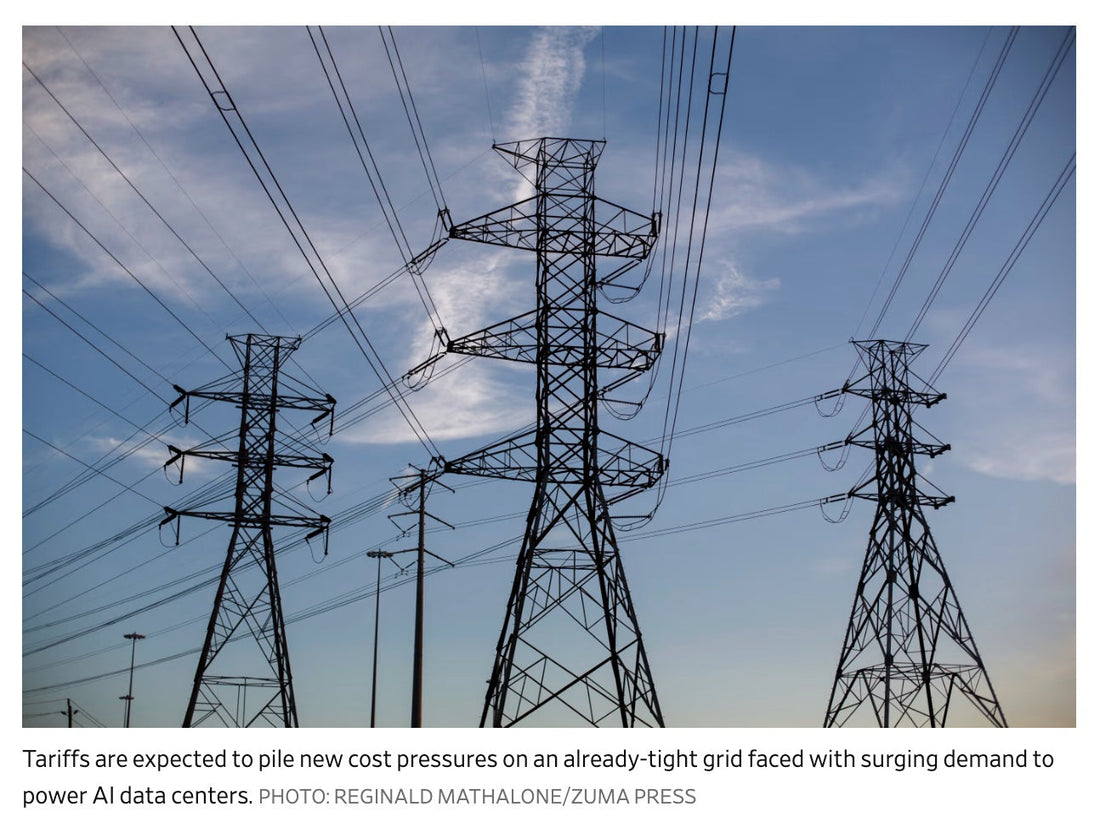
How Tariffs Make Electricity More Expensive: A Kid-Friendly Explanation
Share
Blog image above and the original article this post is based on: WSJ
The power grid in the United States moves electricity from power plants to homes, schools, and businesses. An important part of this system is transformers—machines that control the strength of electricity so it can travel safely. New transformers are also needed whenever new energy sources, like wind power, solar energy, or natural gas, are added to the grid.
Right now, there’s a shortage of transformers in the U.S., and the demand for them is expected to grow. This is partly because more data centers, which power things like the internet and apps, are using lots of electricity. To meet this growing energy demand, the U.S. will need many more transformers by 2050.
However, making transformers has become more expensive. The materials needed—especially steel and copper—have gone up in price. On top of that, the government has added tariffs (extra taxes) on steel, aluminum, and some equipment from countries like China, Mexico, and Canada. These tariffs make transformers even more costly, with prices already up 70-100% since 2020. If more tariffs are added, prices could rise another 8-9%.
Most transformers used in the U.S. come from China (32%), Mexico (36%), and Canada (16%), but it’s hard for U.S. companies to quickly start making enough transformers here. Transformers require special testing and custom designs, so changing suppliers isn’t easy.
Because of the transformer shortage and rising material costs, electricity prices are expected to increase. For example, in New Jersey, electricity bills could rise by 17-20% in 2025 due to higher power demand. Nationwide, electricity prices have been climbing at a rate of 5.7% per year over the last five years.
While clean energy sources, AI technology, and manufacturing growth are important goals for the U.S., these changes could mean higher electricity costs for families in the future.
